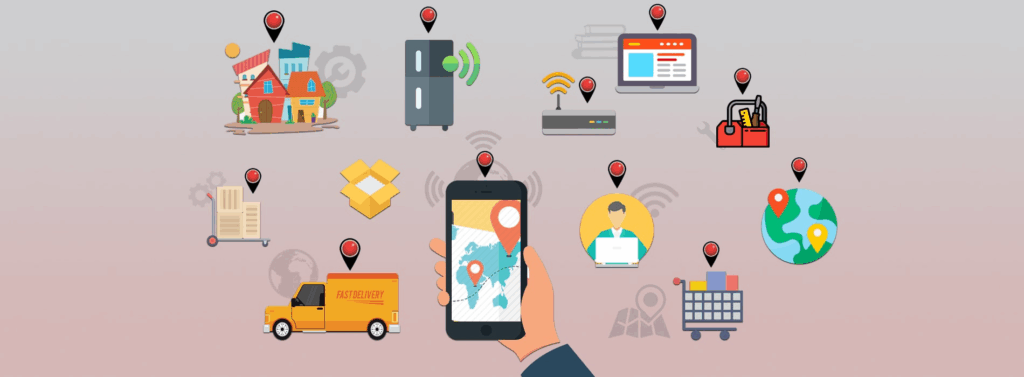旺季期间导致全球跟踪延迟的七大错误
The Hidden Chaos Behind Global Tracking Delays

Peak season brings crowded warehouses, overflowing orders, and customers constantly checking tracking updates. Yet, Global Tracking Delays remain a significant issue. Packages get stuck, tracking numbers don’t update, and customer service gets flooded with inquiries. These delays stem from system errors, poor coordination, and overloaded carriers, which increase costs and harm brand reputation.
To maintain smooth operations and preserve customer confidence, businesses must identify and address these issues before the next surge. Here are the top seven mistakes causing global tracking delays during peak seasons, along with practical solutions to address them.
1. Inaccurate or Incomplete Tracking Data
Why this happens
Tracking systems rely on multiple data sources, including 本地运营商, customs, and warehouses. When synchronization fails at any point, it creates missing or outdated data. This typically occurs when carriers upload tracking events late or skip scanning checkpoints altogether.
Common triggers
- Delayed barcode scans at origin or sorting centers
- Manual data entry errors during transit updates
- System downtime in regional logistics hubs
- Lost handover data when shipments change carriers
How to fix it
- Implement automated real-time data synchronization between carriers and your platform.
- Utilize a unified tracking API to consolidate data from all shipping partners in a single location.
- Set up alerts for missing tracking events to detect problems early.
- Encourage carriers to adopt standardized scan formats to maintain data consistency.
为什么重要
Even a single missing scan can break customer trust. Accurate tracking data allows you to communicate confidently and prevent unnecessary refund or dispute claims.
2. Poor Integration Between Carriers and Platforms

The problem
Many global e-commerce sellers utilize multiple shipping providers to manage different routes. But if systems aren’t properly integrated, the data flow becomes fragmented. This leads to Global Tracking Delays and inaccurate delivery estimates.
Warning signs
- Statuses appear in random order or skip critical checkpoints
- Carrier and platform timestamps don’t match
- Different carriers use inconsistent terminology for similar events
The solution
- Build a central visibility dashboard that connects all carriers through verified APIs.
- Run integration tests before every primary sales season.
- Assign a dedicated technical contact for each airline to solve sync issues quickly.
- Invest in a middleware solution that converts carrier data into a unified format.
示例
A U.S.-based electronics DTC brand reduced tracking delays by 28% after switching to an API-driven integration system that refreshed carrier data every 15 minutes, compared to every 6 hours.
3. Overloaded Carrier Networks
What’s going wrong
During peak periods, such as 黑色星期五 or Chinese New Year, global carriers often operate beyond capacity. Sorting hubs overflow, trucks queue at depots, and scanning equipment can’t keep up. Tracking updates freeze for days while the physical package sits idle.

How to detect it
- Many parcels remain at “label created” or “picked up” for more than 48 hours
- Tracking scans show the exact location for extended periods
- Regional hubs report heavy delays in processing
What to do
- Diversify carriers across different zones to distribute risk.
- Forecast order volume using historical sales data and analytics.
- 建设 priority shipping agreements with carriers for high-value orders.
- Add proactive notifications to inform buyers of potential delays during the checkout process.
为什么重要
Carrier overload is one of the top causes of Global Tracking Delays, but proper forecasting and redundancy planning can minimize its impact.
4. Customs and Documentation Errors
Why customs cause bottlenecks
跨境物流 often stall due to the presence of missing or inaccurate customs paperwork. When shipment data doesn’t match the invoice or HS code, customs officers hold the parcel for manual review—sometimes for days.
Common mistakes
- Incorrect product classification or HS code
- Missing digital commercial invoice
- Mismatch between declared and actual value
- Lack of consignee tax information for destination countries
最佳做法
- Automate customs documentation with built-in validation tools.
- Preload country-specific rules into your logistics software.
- Partner with brokers familiar with global trade regulations.
- 添加 EORI and IOSS numbers directly to shipment data for EU-bound packages.
Real-world insight
For electronics shipments, even a missing battery declaration can lead to a 3–5 day clearance delay. Attention to documentation details saves a significant amount of time during peak volumes.
5. Lack of Real-Time Visibility

The hidden gap
Many tracking systems still rely on batch updates, meaning data is only refreshed every few hours. This makes it difficult for businesses to know exactly where their packages are at any given moment.
Symptoms
- Customer service teams can’t confirm current shipment locations
- Delayed push notifications lead to confusion
- Logistics managers react too slowly to issues like misroutes
解决方案
- 使用 IoT-enabled devices to transmit GPS data for high-value shipments.
- Integrate webhook notifications to instantly update order status.
- Adopt 实时跟踪 应用程序接口 instead of batch synchronization.
- Provide customers with visual tracking maps rather than static text updates.
Why this matters
Real-time visibility gives your team control and helps identify bottlenecks before they escalate into severe global tracking delays.
6. Ignoring Local Logistics Constraints
What gets overlooked
Global networks rely on local delivery partners who may not adhere to the same standards for scanning and tracking. This inconsistency often causes partial updates or incorrect timestamps.

为什么重要
- Local carriers handle the most customer-visible part of the journey.
- Missing final-mile scans create uncertainty for both buyers and sellers.
- Regional logistics networks might face infrastructure or labor shortages during holidays.
Fixes
- 设置 precise tracking requirements for local delivery vendors.
- Conduct random audits to verify the accuracy of the scanning process.
- Provide mobile scanning apps for small logistics partners.
- Add automated notifications for unscanned parcels within 24 hours.
示例
A European apparel brand reduced delivery complaints by 40% after mandating standardized scan uploads for all local carriers in Asia.
7. No Contingency Plan for Peak-Season Surges
Why it’s risky
Many companies underestimate the technical load on their tracking systems during global peak periods. As millions of events flood APIs, systems slow down, and Global Tracking Delays occur, even when physical shipments are in transit.
Warning signs
- Tracking pages that load slowly or display “404” errors
- Data syncs lag several hours behind
- Queued messages build up in integration pipelines
How to prepare
- Perform stress testing before major shopping events.
- 利用 cloud-based scaling to manage increased data volumes.
- 部署 CDN caching for tracking portals to prevent timeouts.
- Set up backup databases to maintain data accessibility in the event of a server failure.
为什么重要
Having a contingency plan means your system can stay stable while competitors struggle with downtime and misinformation.
Building a Resilient Tracking System

To reduce Global Tracking Delays, businesses need to focus on transparency, automation, and proactive communication. The goal isn’t just faster updates—it’s predictable reliability.
Key steps for improvement
- Centralize tracking data from all carriers in one unified system.
- Automate customs, invoices, and shipment validation to avoid manual delays.
- Deploy predictive analytics to identify patterns of delays.
- Educate fulfillment teams on the accurate scanning and labeling process.
- Establish clear SLAs with logistics partners to maintain accountability.
The benefits
A reliable tracking system doesn’t just streamline operations—it builds credibility. When customers see consistent updates and timely deliveries, trust grows, and brand loyalty follows.
结论
Global Tracking Delays during peak season are avoidable with preparation, data transparency, and 自动化. Most problems stem from weak integrations, poor visibility, and inadequate planning. Addressing these seven mistakes ensures that your logistics flow remains efficient, even during periods of peak global shipping volumes.
Strong tracking infrastructure doesn’t just expedite parcel delivery—it strengthens the customer relationship behind every shipment. In a competitive global market, consistency and clarity are what truly distinguish a brand.
行业洞察
收件箱消息
Nulla turp dis cursus.整体释放,预留空间






